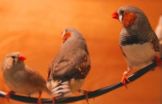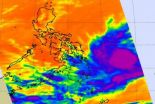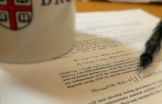(Press-News.org) Scientists know that tapping into local expertise is key to conservation efforts aimed at protecting biodiversity – but researchers rarely give credit to these local experts. Now some scientists are saying that's a problem, both for the local experts and for the science itself.
To address the problem, a group of scientists is calling for conservation researchers to do a better job of publicly acknowledging the role of local experts and other non-scientists in conservation biology.
"For example, in the rainforests of the Yucatán, scientists couldn't even begin to do any conservation research without local guides – between snakebites and getting lost, it would be too dangerous for outsiders to venture in alone," says Nora Haenn, lead author of a paper in Conservation Biology on the subject. "In fact, biologists doing fieldwork there entrust part of their graduate students' training to guides that understand the region and its wildlife."
According to the paper, the Mexican government itself relies on local guides to collect information on biodiversity in the region of the Calakmul Biosphere Reserve, the country's largest protected area for tropical ecosystems.
"Even if they're referring to academic literature, reserve officials are looking at papers that were written by scientists who relied on guides," says Haenn, an associate professor of anthropology and international studies at NC State. "The guides are essential to this work."
However, academic papers and other scientific publications rarely give local guides full credit for their expertise. For example, guides are almost never listed as co-authors, even when they played a primary role in data collection, and often are not listed in a paper's acknowledgements.
"This is because local experts are campesinos, not members of the middle class," Haenn says. "To protect the perceived value of their research findings, and their related status in the field, scientists are hesitant to highlight the important role of local experts, because local experts don't have the social and educational pedigrees that are expected in the scientific community. Ultimately, this hurts everybody."
By failing to highlight the role of local people in conservation research, Haenn and her co-authors argue, outside observers get a skewed perspective on the relationship between local people and conservation efforts. Because locals are not acknowledged as being part of the conservation effort, they are perceived as obstacles to conservation. This makes it more difficult to identify local partners for conservation efforts, since outsiders are often unaware that locals already play a crucial role in conservation.
By the same token, if a scientist hasn't acknowledged the role of local guides in collecting data on a specific subject, it is much more difficult for other researchers to find relevant information to assist in future research endeavors. Certain kinds of conservation challenges, especially involving large geographical areas or poorly documented species, require significant amounts of data collection. Because local experts interact with their environments in a more long-term way than visiting researchers, they often have the kind of detailed knowledge needed for this kind of work.
But failure to fully acknowledge the role of expert guides also has serious repercussions for the guides themselves.
"A lack of formal credit in the science community means that these guides don't get the status – or the salary – that comes with being a recognized expert ," Haenn says. "And campesinos make about $10 a day, or half of what would be a middle-class salary in the region, so this has a significant impact on their quality of life.
"And while our focus was on tropical Mexico, we think our conclusions are likely relevant for conservation biologists doing fieldwork around the world," Haenn says.
INFORMATION:
The paper, "Improving Conservation Outcomes with Insights from Local Experts and Bureaucracies," is a peer-reviewed essay, published online in the journal Conservation Biology. The paper was co-authored by Birgit Schmook and Yol Reyes of El Colegio de la Frontera Sur (ECOSUR) in Mexico, and Sophie Calmé of the Université de Sherbrooke in Canada. The research was supported, in part, by Mexico's Consejo Nacional de Ciencia y Tecnología.
Where credit is due: How acknowledging expertise can help conservation efforts
2014-04-08
ELSE PRESS RELEASES FROM THIS DATE:
Blocking DNA repair mechanisms could improve radiation therapy for deadly brain cancer
2014-04-08
DALLAS – April 8, 2014 – UT Southwestern Medical Center researchers have demonstrated in both cancer cell lines and in mice that blocking critical DNA repair mechanisms could improve the effectiveness of radiation therapy for highly fatal brain tumors called glioblastomas.
Radiation therapy causes double-strand breaks in DNA that must be repaired for tumors to keep growing. Scientists have long theorized that if they could find a way to block repairs from being made, they could prevent tumors from growing or at least slow down the growth, thereby extending patients' survival. ...
What songbirds tell us about how we learn
2014-04-08
This news release is available in French. When you throw a wild pitch or sing a flat note, it could be that your basal ganglia made you do it. This area in the middle of the brain is involved in motor control and learning. And one reason for that errant toss or off-key note may be that your brain prompted you to vary your behavior to help you learn, from trial-and-error, to perform better.
But how does the brain do this, how does it cause you to vary your behavior?
Along with researchers from the University of California, San Francisco, Indian Institute of Science ...
NASA satellite sees Tropical Depression Peipah approaching Philippines
2014-04-08
As Tropical Depression Peipah continues moving toward the central Philippines, NASA's Aqua satellite passed overhead and took an infrared look at the cloud top temperatures for clues about its strength.
On April 8 at 05:11 UTC/1:11 a.m. EDT/11 p.m. Manila local time, the Atmospheric Infrared Sounder instrument known as AIRS gathered infrared data on Tropical Depression Peipah. AIRS is one of the instruments that flies aboard NASA's Aqua satellite. The AIRS data showed thunderstorms with very cold cloud-top temperatures surrounded the center of the low-level circulation ...
Intranasal ketamine confers rapid antidepressant effect in depression
2014-04-08
A research team from the Icahn School of Medicine at Mount Sinai published the first controlled evidence showing that an intranasal ketamine spray conferred an unusually rapid antidepressant effect –within 24 hours—and was well tolerated in patients with treatment-resistant major depressive disorder. This is the first study to show benefits with an intranasal formulation of ketamine. Results from the study were published online in the peer-reviewed journal Biological Psychiatry on April 2, 2014.
Of 18 patients completing two treatment days with ketamine or saline, eight ...
DNA modifications measured in blood signal related changes in the brain
2014-04-08
Johns Hopkins researchers say they have confirmed suspicions that DNA modifications found in the blood of mice exposed to high levels of stress hormone — and showing signs of anxiety — are directly related to changes found in their brain tissues.
The proof-of-concept study, reported online ahead of print in the June issue of Psychoneuroendocrinology, offers what the research team calls the first evidence that epigenetic changes that alter the way genes function without changing their underlying DNA sequence — and are detectable in blood — mirror alterations in brain tissue ...
New methodology to find out about yeast changes during wine fermentation
2014-04-08
This knowledge is of particular interest for producers, since changes in the grape directly affect the chemical composition of the must.
The thesis entitled "Estudios avanzados de la fisiología de levadura en condiciones de vinificación. Bases para el desarrollo de un modelo predictivo" [Advanced studies into yeast physiology in vinification conditions. Bases for developing a forecasting model] is part of the Demeter project. This project seeks to study and find out the effects of climate change on viticultural and oenological activities, and to come up with new strategies ...
From learning in infancy to planning ahead in adulthood: Sleep's vital role for memory
2014-04-08
Boston - April 8, 2014 - Babies and young children make giant developmental leaps all of the time. Sometimes, it seems, even overnight they figure out how to recognize certain shapes or what the word "no" means no matter who says it. It turns out that making those leaps could be a nap away: New research finds that infants who nap are better able to apply lessons learned to new skills, while preschoolers are better able to retain learned knowledge after napping.
"Sleep plays a crucial role in learning from early in development," says Rebecca Gómez of the University of ...
Innovative, coordinated brain care could save billions of health care dollars
2014-04-08
INDIANAPOLIS -- Studies have shown that a new patient and caregiver centered model of innovative, coordinated brain care for older adults improves health outcomes and quality of care for those with cognitive impairment. A new study from the Regenstrief Institute, Eskenazi Health and Indiana University Center for Aging Research implementation scientists who developed the Healthy Aging Brain Center care model shows that such care also produces impressive cost savings.
The Healthy Aging Brain Center care model generated an annual net cost savings of up to $2,856 per patient ...
New epidemiology model combines multiple genomic data
2014-04-08
PROVIDENCE, R.I. [Brown University] — The difference between merely throwing around buzzwords like "personalized medicine" and "big data" and delivering on their medical promise is in the details of developing methods for analyzing and interpreting genomic data. In a pair of new papers, Brown University epidemiologist Yen-Tsung Huang and colleagues show how integrating different kinds of genomic data could improve studies of the association between genes and disease.
The kinds of data Huang integrates are single-nucleotide differences in DNA, called SNPs, data on gene ...
Western University study unlocking secrets of breast tissue
2014-04-08
A unique population of microbes in the female breast may lay the groundwork for understanding how this bacterial community contributes to health and disease, according to a new study out of Western University (London, Canada). The study titled "Microbiota of human breast tissue," is now published online, in advance of the May issue of Applied and Environmental Microbiology.
The human body is home to a large and diverse population of bacteria with properties that are both harmful and beneficial to our health. Studies are revealing the presence of bacteria in unexpected ...





